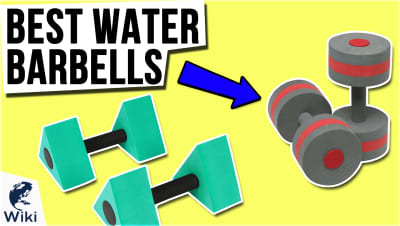7 Exceptional Wine Producers On The West Coast
Lovers of wine like to dig deep, concerned with every aspect of how climate and soil affect taste. The Western United States is littered with vineyards, producing a wide variety of excellent vintages. Whether you're planning a Sideways-style tasting trip or just searching for a new favorite bottle, consider one of these excellent producers. This video was made with Ezvid Wikimaker.
7 West Coast Wine Producers For Your Drinking Pleasure
| Name | Location |
|---|---|
| Helioterra Wines | Portland, OR |
| Fiddlehead Cellars | Lompoc, CA |
| ROCO Winery | Newberg, OR |
| Abeja | Walla Walla, WA |
| Lula Cellars | Philo, CA |
| Hard Row to Hoe | Manson, WA |
| Brandborg Vineyard & Winery | Elkton, OR |
Matt Parish from Lula Cellars
Gift Ideas For Wine Lovers
- Wine totes for transporting cold bottles to dinner parties & picnics
- Electric bottle openers that make uncorking easy
- Aerators that bring out the best flavor
- Wine savers to keep unfinished wine from spoiling
- A set of nice glasses for classy parties
- A set of unbreakable glasses for outdoor get-togethers
- Cork holders that turn corks into works of art
- Racks for nicely displaying bottles
- Wine pourers that increase exposure to oxygen
- Decanters to enhance the bouquet
ROCO Winery Virtual Pinot Noir Tasting with Winemaker Rollin Soles
In Depth
The west coast has the largest number of wineries in the United States and leads the nation in wine production. The differing climates and soil types bring a diversity to what can be created. In no particular order, here are 7 remarkable wine producers spanning from California to Washington.
First up at #1 is Helioterra Wines, an urban winery located in Southeast Portland, Oregon. Founder Anne Hubatch gained hands-on exposure to the wine industry during a decade spent training with some of Oregon's best winemakers. Anne founded Helioterra after she introduced her first solo vintage in 2009.
The wines are made from vineyards in Oregon and Washington, selected for their unique geological characteristics, climate, and quality of fruit. Each selection is made in the Southeast Portland winery with minimal intervention. Helioterra makes three pillars of wines: Willamette Valley and single vineyard pinot noir, aromatic whites, and Rhone variety reds.
The wines are made from vineyards in Oregon and Washington, selected for their unique geological characteristics, climate, and quality of fruit.
Next, at #2, is Fiddlehead Cellars, located in Lompoc, California. In the early 1980's, Kathy Joseph, a Chicago native, moved to California with the hopes of redirecting her degrees in Microbiology and Biochemistry towards research in the wine industry. Fiddlehead was established in 1989 and now produces about 5,000 cases annually. Everything is made at FiddleHeadquarters, Joseph's winery in the Lompoc Wine Ghetto of Santa Barbara County.
Fiddlehead Cellars is focused on showcasing the pinot noir and sauvignon blanc styles. They craft three styles of sauvignon blanc: Happy Canyon, Hunnysuckle, and Goosebury. For pinot noir, Fiddlehead sources grapes from two different growing districts. Seven Twenty Eight, Lollapalooza, and Doyle are crafted from the Estate Vineyard, Fiddlestix in the Santa Rita Hills. Oldsville Reserve and Alloro wines come from the Chehalem Mountains in Oregon.
At #3 is ROCO Winery, located in the Chehalem Mountain Range of Oregon. ROCO was founded in 2001 by Rollin and Corby Soles. They planted the estate Wits' End Vineyard, and two years later they produced their first vintage of Private Stash Pinot Noir. In 2009, the Soles built ROCO its own winery and added a tasting room in 2012.
They planted the estate Wits' End Vineyard, and two years later they produced their first vintage of Private Stash Pinot Noir.
The Soles began planting pinot noir at Wits' End Vineyard. In 2013, they expanded it to a total of 20 acres, adding a block of chardonnay in the process.
At #4 is Abeja, located on a restored century-old farmstead in the foothills of the Blue Mountains, four miles east of Walla Walla, Washington. The 38-acre site is home to the Abeja winery and The Inn at Abeja. Founders Ken and Ginger Harrison came to Walla Walla Valley in the late 1990s in search of land suitable for planting cabernet sauvignon.
Today Abeja is the realization of the Harrisons' vision. Winemakers Daniel Wampfler and Amy Alvarez-Wampfler craft Abeja's Cabernet Sauvignon, Chardonnay, and Merlot, as well as the winery's limited-release estate and reserve wines. Abeja's estate-grown wines are made from sustainably farmed grapes harvested at Heather Hill and Mill Creek vineyards.
Winemakers Daniel Wampfler and Amy Alvarez-Wampfler craft Abeja's Cabernet Sauvignon, Chardonnay, and Merlot, as well as the winery's limited-release estate and reserve wines.
Next up at #5 is Lula Cellars, a boutique winery located in the Deep End of the Anderson Valley. The winery's home is on a 22-acre property in Philo, California, 2 1/2 hours north of San Francisco. With an annual production of around 4,000 cases, Lula's focus is on Estate and Anderson Valley Pinot Noirs and single vineyard offerings from the greater Mendocino County.
In June 2017, Lula Cellars introduced Matt Parish as their new winemaker. Matt has a reputation as a top-tier winemaker in the US and around the world. He brings more than two decades of experience to Lula, with a background spanning 25 vintages.
At #6 is Hard Row to Hoe. Co-owner Judy Phelps is focused on making wine from locally-sourced grapes grown in the Lake Chelan Valley. This helps to define the terroir of this new growing region by focusing on small lot, single vineyard wines.
Co-owner Judy Phelps is focused on making wine from locally-sourced grapes grown in the Lake Chelan Valley.
Her partner, Don, is one of the pioneers in the development of the estate vineyards. His passion for land stewardship has resulted in the first certified Low Input Viticulture and Enology and Salmon-Safe vineyard in the area. There are 13 acres of estate vineyards, all located on the North Shore and planted to varietals such as chardonnay, cabernet franc, syrah, riesling, and malbec.
Last, at #7, is Brandborg Vineyard & Winery. Terry and Sue Brandborg undertook a long search for a cool, coastal climate terroir that would produce distinct wines. Their journey led them to Elkton, Oregon, in the Umpqua Valley, where they planted their first 5 acres of pinot noir. Terry and Sue built a functional winery, now with 50 acres of vines.
The Umpqua Valley has 3000 planted acres, with pinot noir the most planted variety. Elkton Oregon American viticultural area was officially designated in 2013 as a means to differentiate this area from the much warmer microclimate characteristics of most of southern Oregon. The long frost free growing season results in grapes that can hang on the vine longer, developing a complex flavor.















